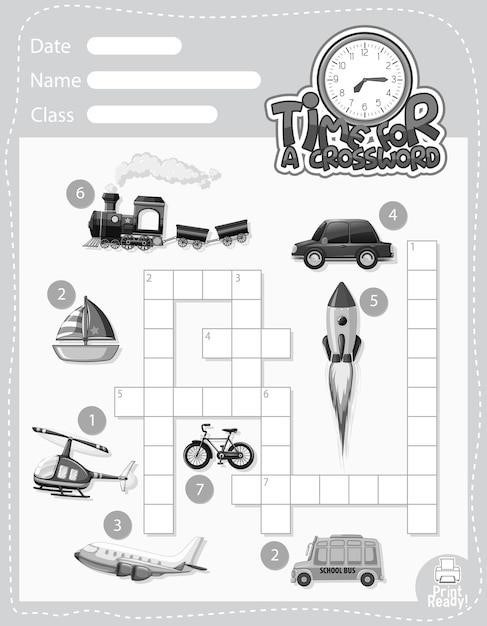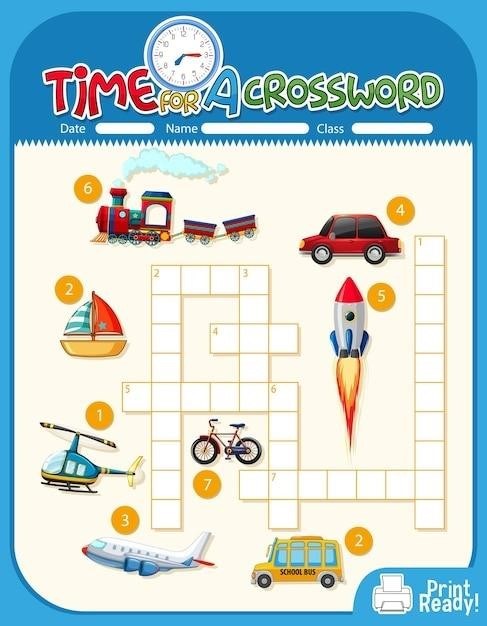SSI-4 Reading Passages⁚ A Comprehensive Guide
The Stuttering Severity Instrument ⎻ 4th Edition (SSI-4) is a reliable‚ valid standardized assessment used by SLPs to measure the severity of stuttering in individuals. The SSI-4 provides valuable information about the nature of a clients stuttering disorder‚ which aids in the development of individualized treatment plans.
Introduction
The Stuttering Severity Instrument ー 4th Edition (SSI-4) is a widely recognized and utilized tool in the field of speech-language pathology for assessing stuttering severity in individuals. This comprehensive assessment instrument plays a crucial role in providing a thorough evaluation of stuttering‚ aiding in the development of effective treatment plans‚ and monitoring progress over time. The SSI-4 incorporates a variety of assessment components‚ including a standardized reading passage‚ which serves as a valuable component in the assessment process. This guide delves into the significance and application of SSI-4 reading passages‚ providing a comprehensive overview of their purpose‚ administration‚ and interpretation in the context of stuttering assessment. By understanding the intricacies of these reading passages‚ clinicians can enhance their ability to accurately assess stuttering severity and tailor treatment interventions to meet the unique needs of their clients.

What is the SSI-4?
The Stuttering Severity Instrument ⎻ 4th Edition (SSI-4) is a standardized‚ norm-referenced assessment tool designed to measure the severity of stuttering in individuals of various ages‚ from preschool-aged children to adults. The SSI-4 is widely used by speech-language pathologists (SLPs) to objectively evaluate the characteristics and impact of stuttering‚ providing valuable insights into the nature of the disorder. The assessment encompasses various aspects of stuttering behavior‚ including the frequency‚ duration‚ and physical concomitants (secondary characteristics) of stuttering events; The SSI-4 utilizes a structured format‚ including standardized reading passages‚ to elicit speech samples and quantify stuttering severity. These reading passages serve as controlled stimuli that allow for consistent and reliable assessment across individuals. The SSI-4’s comprehensive approach‚ combined with its standardized nature‚ ensures that clinicians have a reliable tool for measuring stuttering severity‚ guiding treatment decisions‚ and monitoring progress over time.
Purpose and Applications
The primary purpose of the SSI-4 is to provide a standardized and objective measure of stuttering severity in individuals‚ encompassing both children and adults. This assessment tool serves as a valuable resource for speech-language pathologists (SLPs) in several key applications⁚
Diagnosis and Assessment⁚ The SSI-4 assists SLPs in identifying and confirming the presence of stuttering‚ determining its severity level‚ and understanding its impact on the individual’s communication skills.
Treatment Planning⁚ The assessment results provide crucial information for developing individualized treatment plans tailored to the specific needs of the individual.
Progress Monitoring⁚ The SSI-4 can be administered periodically to track the progress of stuttering therapy and evaluate the effectiveness of interventions.
Research⁚ The SSI-4 is utilized in research studies investigating the nature‚ causes‚ and treatment of stuttering.
Legal and Educational Settings⁚ The standardized nature of the SSI-4 makes it valuable in legal and educational settings‚ providing objective documentation of stuttering severity for purposes such as disability assessments or educational accommodations.
The SSI-4’s versatile applications make it a cornerstone assessment tool for SLPs‚ providing a comprehensive framework for evaluating and addressing stuttering in individuals across various contexts.
Administration and Scoring
The SSI-4 administration involves a structured process designed to elicit representative speech samples from the individual being assessed. The examiner guides the individual through a series of tasks‚ including spontaneous speech‚ reading aloud‚ and picture description. These tasks aim to capture a range of speaking contexts that might reveal stuttering behaviors.
The scoring of the SSI-4 is based on a comprehensive analysis of the individual’s speech samples. The examiner meticulously evaluates four key aspects of stuttering⁚
Frequency⁚ The percentage of syllables stuttered is calculated by dividing the number of stuttered syllables by the total number of syllables spoken.
Duration⁚ The average duration of the three longest stuttering events is measured in seconds.
Physical Concomitants⁚ The presence and severity of physical behaviors associated with stuttering‚ such as facial grimaces‚ eye blinks‚ or head movements‚ are noted.
Naturalness of Speech⁚ The overall smoothness and fluency of the individual’s speech are evaluated on a subjective scale.
The SSI-4’s scoring system is designed to provide a comprehensive and objective assessment of stuttering severity‚ encompassing both quantifiable measures and subjective observations. The results are then used to determine the severity level of the individual’s stuttering and guide the development of appropriate treatment plans.
Reading Passages in the SSI-4
The SSI-4 utilizes a carefully selected set of reading passages that are designed to assess stuttering severity during reading tasks. These passages are specifically chosen to be appropriate for different age groups and reading levels‚ ensuring that the assessment accurately captures the individual’s fluency challenges in a controlled reading context.
The reading passages in the SSI-4 are typically brief‚ ranging from a few sentences to a short paragraph‚ and cover a variety of topics that are engaging and relevant to the target age group. The passages are presented in a clear and concise manner‚ minimizing any potential distractions or complexities that could hinder the individual’s reading fluency.
The use of reading passages in the SSI-4 provides valuable insights into the individual’s stuttering behaviors during a controlled reading task. This information complements the assessment of spontaneous speech‚ offering a more comprehensive understanding of the individual’s stuttering patterns and their impact on reading fluency. The reading passages in the SSI-4 are an essential component of the assessment‚ providing a structured and standardized means to evaluate stuttering severity during reading.
Types of Reading Passages
The SSI-4 reading passages fall into two primary categories⁚ narrative and expository. Narrative passages tell a story‚ engaging the reader with characters‚ events‚ and a plot. These passages often feature descriptive language and dialogue‚ creating a more immersive experience for the reader. Examples of narrative passages in the SSI-4 include stories about animals‚ children‚ or everyday events.
Expository passages‚ on the other hand‚ aim to inform the reader about a particular topic or concept. They typically present factual information‚ explanations‚ and definitions‚ using a clear and concise writing style. Expository passages in the SSI-4 might cover subjects like science‚ history‚ or geography‚ providing the reader with knowledge and understanding.
The inclusion of both narrative and expository passages in the SSI-4 allows for a more comprehensive assessment of reading fluency. By exposing the individual to different types of text‚ the clinician can gain insights into their stuttering patterns across various reading contexts. This diverse approach ensures that the assessment captures the individual’s fluency challenges in a variety of reading situations‚ providing a more complete picture of their stuttering behaviors during reading.
Grade Levels and Reading Levels
The SSI-4 reading passages are carefully selected to align with specific grade levels and reading levels‚ ensuring that the assessment is appropriate for individuals of varying ages and abilities. The passages are designed to challenge the individual’s reading skills while remaining accessible and engaging.
The SSI-4 manual provides clear guidelines for choosing the appropriate passage based on the individual’s age and estimated reading level. For younger children‚ simpler passages are provided‚ while older individuals or those with more advanced reading skills are presented with more challenging texts. This ensures that the assessment is tailored to the individual’s capabilities‚ maximizing the accuracy and reliability of the results.
By matching the reading passage to the individual’s grade level and reading level‚ the SSI-4 ensures that the assessment is both fair and relevant. This approach allows the clinician to objectively evaluate the individual’s stuttering severity in a reading context that is appropriate for their age and reading ability. The SSI-4’s emphasis on grade-specific and level-appropriate passages makes it a valuable tool for assessing stuttering in a wide range of individuals‚ contributing to effective diagnosis and treatment planning.
Examples of Reading Passages
The SSI-4 offers a variety of reading passages that cover a range of topics and reading levels‚ ensuring a comprehensive assessment of stuttering in different contexts. These passages are designed to evoke a natural flow of speech‚ allowing the clinician to observe the individual’s stuttering patterns in a controlled environment.
Some examples of reading passages used in the SSI-4 include⁚
- “The Rainbow Passage”⁚ This classic passage describes the formation of a rainbow‚ using vivid imagery and complex sentence structure.
- “Cesar Chavez” and “Harriet Tubman” passages⁚ These passages focus on historical figures‚ offering a blend of factual information and narrative elements‚ suitable for older individuals or those with higher reading levels.
These passages are carefully chosen to provide a range of linguistic and emotional-valence characteristics‚ making them suitable for both clinical use and research purposes. The SSI-4’s diverse selection of reading passages ensures that the assessment is adaptable to various individuals‚ providing valuable insights into their stuttering patterns and facilitating effective treatment planning.
Importance of Reading Passages in Stuttering Assessment
Reading passages play a crucial role in the SSI-4 assessment‚ providing valuable insights into an individual’s stuttering patterns within a controlled and standardized context. This structured environment allows the clinician to observe and analyze stuttering behaviors in a way that’s not always possible during spontaneous conversation.
Reading passages offer several advantages for stuttering assessment⁚
- Controlled Environment⁚ Unlike spontaneous speech‚ reading passages provide a predictable and controlled linguistic context‚ reducing the influence of external factors on stuttering behaviors.
- Standardized Content⁚ The use of standardized reading passages ensures consistency and comparability across assessments‚ allowing for accurate measurement of stuttering severity and progress over time.
- Linguistic Variety⁚ The SSI-4 includes passages with varying levels of complexity and emotional valence‚ allowing clinicians to assess stuttering in different linguistic contexts.
- Objective Measurement⁚ Reading passages facilitate objective measurement of stuttering behaviors‚ including frequency‚ duration‚ and physical concomitants‚ providing a quantifiable basis for treatment planning and progress monitoring.
By incorporating reading passages into the assessment process‚ the SSI-4 provides a comprehensive and reliable evaluation of stuttering‚ enabling clinicians to develop individualized treatment plans tailored to each client’s unique needs.
The SSI-4 reading passages serve as an essential component of a comprehensive stuttering assessment‚ providing valuable insights into an individual’s stuttering patterns within a controlled environment. These standardized passages allow clinicians to objectively measure stuttering behaviors‚ including frequency‚ duration‚ and physical concomitants‚ facilitating the development of individualized treatment plans tailored to each client’s unique needs.
The standardized nature of the SSI-4 reading passages ensures consistency and comparability across assessments‚ enabling accurate monitoring of progress over time. By incorporating these passages into the assessment process‚ the SSI-4 provides a reliable and comprehensive evaluation of stuttering‚ contributing to a deeper understanding of the disorder and supporting the development of effective treatment strategies.
The SSI-4‚ with its inclusion of reading passages‚ stands as a valuable tool for speech-language pathologists‚ empowering them to provide evidence-based and individualized care to individuals who stutter‚ ultimately improving their communication skills and quality of life.
















